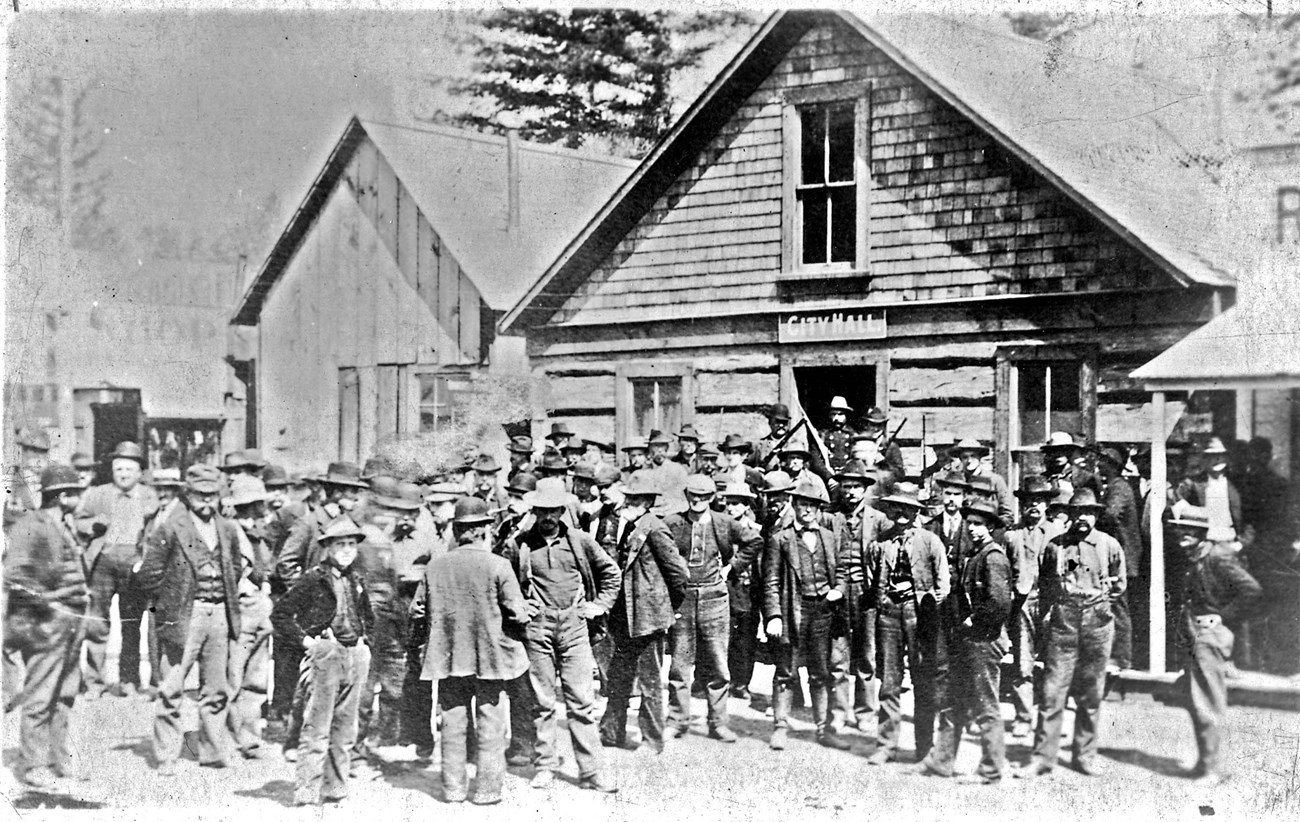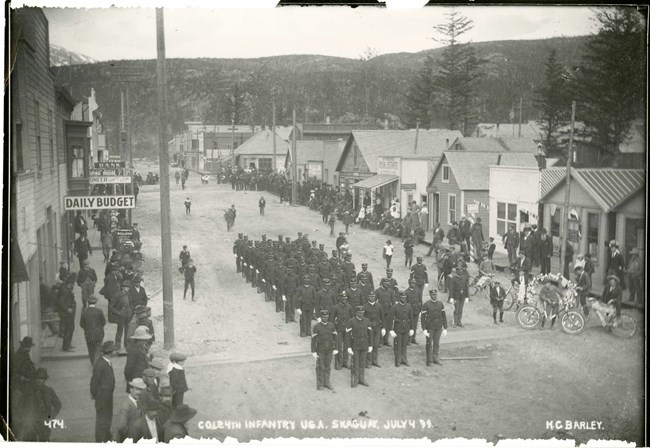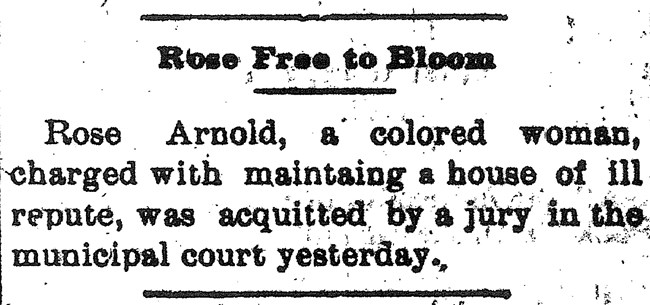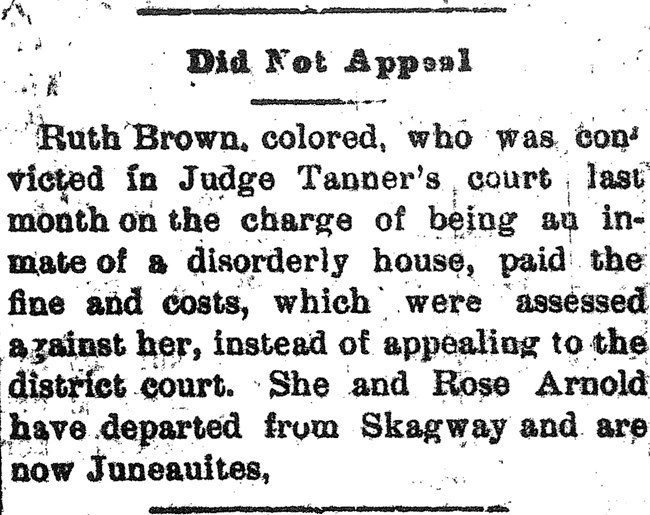
National Park Service, Klondike Gold Rush National Historical Park, George and Edna Rapuzzi Collection, KLGO 55892. Gift of the Rasmuson Foundation. A City is BornSkagway’s population has always been nonstandard. This was not a city carefully planned out and executed, this was a city born out of necessity. Thousands of people flocked to this tiny port in Southeast Alaska. They brought with them their hopes in making the almost 600 mile journey north to the interior and to the gold fields. In less than five years Skagway hosted people from all over the United States and the world. People from all walks of life flocked towards Skagway and the promise of easily earned money. Some started businesses, some came looking for work, and others for gold. Most people arriving here came to earn a living, but the town was struggling to turn their melting pot of people into a community. 
Photo courtesy of the Alaska State Library Paul Sincic Collection (ASL-P75-144) A Diverse Population ArisesIn 1899 the African American community in Skagway became solidified with the arrival of Company L of the 24th infantry. The 24th infantry was one of four all black units in the United States Army. One hundred and twelve men made up Company L, and although they were here for a short time, 1899-1902, they made a clear impact in Skagway society. Company L’s presence and work here helped spread tolerance. Skagway avoided the Jim Crow mentality affecting many parts of the country. By becoming residents here Company L also opened the door to other African Americans looking to come north. These soldiers blazed the trail for an African American workforce in Skagway. The town now hosted African American barbershop owners, housemaids, and sex workers. 
NPS photo/S. Millard The Most Dangerous ProfessionTwo women in particular stand out in Skagway’s African American history; Rose Arnold and Ruth Brown. Rose and Ruth had worked in the sex industry, before their arrival in Skagway and like many other professional prostitutes, they saw the advantage in working in a boomtown. In particular these women saw their opportunity for success arise when Company L became established in Skagway. There was already one account of a white prostitute refusing service to a black soldier, and these women saw their opening. Ruth and Rose established their own house of ill repute on the east end of sixth avenue, right next door to Company L’s barracks. While the soldiers were stationed here Ruth and Rose had steady business. The enlisted men and those who elected to stay in Skagway after they had been discharged at the end of their service were patrons to the women. The End of the Gold RushWhen the soldiers left in 1902 Ruth Brown and Rose Arnold find themselves in a less lucrative business environment. The exit of Company L took the bulk of their customer base away and left the women with an uncertain future. Their once prime location next to the army barrack was now a liability. Now their only neighbors were the Peniel Missionaries who would rather see prostitution meet its end in Skagway. With the gold rush over and Company L's departure, Ruth and Rose are in a tricky situation. 
The Daily Alaskan. January 26, 1905 Changing PoliticsBy 1905 the once Marshal, now Magistrate, Tanner ruled over the gamblers, prostitutes, and saloon owners in Skagway. Prostitution was still alive and well in Skagway yet heavily regulated through quarterly fines. Each quarter women in the sex industry plead guilty and paid their fine of $25 plus court fees, roughly $550 in today’s money. This means each woman paid over $2,000 in fines each year to stay in business. On January 25, 1905 Rose and Ruth had enough. When their time came to face Magistrate Tanner both women plead not-guilty to “being an inmate of a house of ill-repute.” No women had tried this before and much to the surprise of the Ruth and Rose, it worked, almost. Rose Arnold was acquitted of being, “an inmate of a house of ill fame." While Ruth Brown tied up the court for a few days fighting the charge of, “keeping a house of ill repute in connection with Rose Arnold.” 
The Daily Alaskan. February 16, 1905 Life After SkagwayAfter their departure from Skagway Ruth and Rose esentially disappear from the public record. A Ruth Brown appears on a shipping manifest in 1911 sailing from Vancouver to Juneau, but this may a different Ruth all together. It is not surprising that these women more or less disappear. Many women in the sex industry would use multiple false names to protect their true identity. |
Last updated: April 17, 2018
